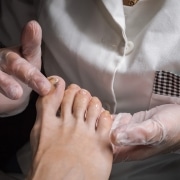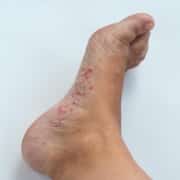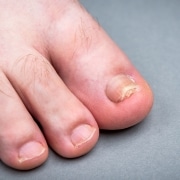I Think I Have Foot Fungus – How Can I Get Treatment?
Foot fungus is a problem that can affect athletes as well as people who do not participate in sports. When you’re suffering from foot fungus, your quality of life can be impacted. Foot fungus is uncomfortable, and can also leave some people feeling self-conscious. Your foot doctor in Pflugerville, TX can help.
At Dr. Jeffrey Lamour, DPM, PA, we help patients maintain healthy feet free of conditions like athlete’s foot. If you believe you’re suffering from foot fungus and your condition is difficult to treat, we want to help.
What Causes Foot Fungus?
Foot fungus is a condition that is caused by exposure to fungus. Foot fungus can spread in public showers, or through direct contact with shoes and socks exposed to foot fungus.
Foot fungus thrives when the conditions are right. If your feet remain sweaty and wet for long periods, you may be vulnerable to foot fungus. This can also happen if you often wear close-toed shoes with plastic lining.
How Can Foot Fungus Be Avoided?
One thing you can do to avoid foot fungus is to take care of your feet and avoid contact with infected surfaces. Keep your feet dry and wear breathable shoes. Do not wear the same socks several days in a row. If you are using a public shower, wear shower shoes to keep your feet protected.
How Is Foot Fungus Treated?
Foot fungus can be treated with over-the-counter medications, but if your foot fungus does not go away with these treatments, talk to your foot doctor. You should also see a foot doctor if your foot fungus returns often after treatment.
What Are the Signs of Foot Fungus?
There are many signs of foot fungus.
- Skin is red and itchy, especially between your toes
- Your feet get oozing blisters
- Your feet are painful
Foot fungus can also cause an unpleasant odor. Do you need help treating your foot fungus treatment in Pflugerville, TX? If so, contact your foot doctor at Dr. Jeffrey Lamour, DPM, PA. We’re here to help.










